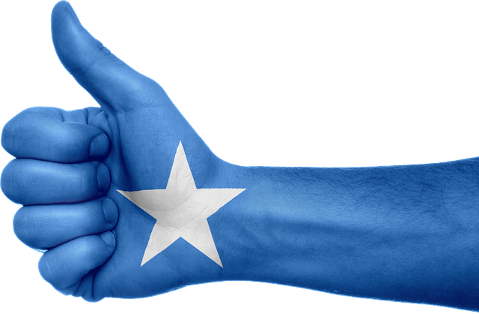Today, the majority of African countries and territories implement right-hand traffic (RHT) for their roads. Only about 14 African countries and territories practice left-hand traffic (LHT). Globally speaking, only about 30% of the world's countries and territories implement left-hand traffic (LHT), which accounts for about a sixth of the world's area, 35% of its population and 25% of its roads. The rest 70% of the countries follow RHT.
 Right-Hand Traffic (RHT) is the practice of keeping to the right side of the road in bidirectional traffic. In the same way, Left-Hand Traffic (LHT) refers to the practice of keeping to the left side of the road in bidirectional traffic. An elementary rule of the road, it is worthwhile knowing which side of the road to drive before attempting to drive in foreign countries.
Right-Hand Traffic (RHT) is the practice of keeping to the right side of the road in bidirectional traffic. In the same way, Left-Hand Traffic (LHT) refers to the practice of keeping to the left side of the road in bidirectional traffic. An elementary rule of the road, it is worthwhile knowing which side of the road to drive before attempting to drive in foreign countries.
People in Somalia follow right hand traffic rule. Countries that implement RHT almost always use left-hand drive (LHD) vehicles. The steering wheels of these cars are placed on the left-hand side, and therefore the driver sits on the left side of the car. People go around roundabouts in counterclockwise direction.
How RHT came into vogue
In the past, almost everybody travelled on the left side of the road because that was the most sensible option for safety reasons. Since most people were right-handed, swordsmen preferred to keep to the left in order to have their right arm nearer to an opponent, and free to hold a sword. Furthermore, they found it easier to mount their horses from the left, as wearing a sword on the left made it difficult to do otherwise. Since it was safer to mount and dismount towards the side of the road, rather than in the middle of traffic, it made sense to ride the horse on the left side of the road.
In the late 1700s, however, teamsters in France and the United States began hauling farm products in big wagons pulled by several pairs of horses. These wagons had no driver’s seat, and the driver sat on the left rear horse to be able to lash the team with his right hand. Since he was sitting on the left, he kept to the right side of the road.
In addition, the French Revolution of 1789 gave a huge impetus to right-hand travel in Europe. Before the Revolution, the aristocracy travelled on the left of the road, forcing the peasantry over to the right. Post the revolution, the aristocrats preferred to keep a low profile and joined the peasants on the right. Soon, travelling on the right side became a symbol of freedom that quickly spread to other European countries.
Also, as Napoleon came to power, he began changing the left-hand rule to right-hand to suit his own requirements. As he was left-handed, he preferred to stay on the right side of the road with his sword in his left-hand, ready for attack or defense. So he introduced the right-hand system in countries or territories he conquered.
Napoleon’s conquests spread the new right-hand traffic rule to Belgium, the Netherlands, Luxembourg, Switzerland, Germany, Poland and many parts of Spain and Italy. The states that resisted Napoleon like Britain, the Austro-Hungarian Empire and Portugal, kept left.
Left-hand driving became mandatory in Britain in 1835. Countries which were part of the British empire followed suit. Somalia – a part of former British Somaliland – had LHT until it formed a union with the former Italian Somaliland which had RHT.
Vehicles in Somalia
Countries that follow RHT usually use LHD vehicles. But some countries like Somalia use both LHD and RHD vehicles. The government has been planning to ban the imports and use of the right-hand-drive (RHD) vehicles in an attempt to improve road safety in Somalia.
You can find a wide selection of affordable LHD vehicles on Gaadhi.com – Somalia’s leading online automotive portal. The site offers not just vehicles, but also insurance, loans and spares for your vehicles at pocket-friendly prices. So, the next time you think of buying cars, bikes, or trucks, visit Gaadhi.com for the best deals from the comfort of your home!
Below is a list of African countries and the side of the road on which they drive.
Countries following RHT in Africa:
1 Algeria
2 Angola
3 Benin
4 Burkina Faso
5 Burundi
6 Cameroon
7 Cape Verde
8 Central African Republic
9 Chad
10 Comoros
11 Côte D'Ivoire
12 Democratic Republic Of Congo
13 Djibouti
14 Egypt
15 Equatorial Guinea
16 Eritrea
17 Ethiopia
18 Gabon
19 Gambia
20 Ghana
21 Guinea
22 Guinea-Bissau
23 Liberia
24 Libya
25 Madagascar
26 Mali
27 Mauritania
28 Morocco
29 Niger
30 Nigeria
31 Republic Of Congo
32 Rwanda
33 Senegal
34 Sierra Leone
35 Somalia
36 South Sudan
37 Sudan
38 São Tomé And Príncipe
39 Togo
40 Tunisia
41 Western Sahara
Countries following LHT in Africa:
1 Botswana
2 Eswatini (Swaziland)
3 Kenya
4 Lesotho
5 Malawi
6 Mauritius
7 Mozambique
8 Namibia
9 Seychelles
10 South Africa
11 Tanzania
12 Uganda
13 Zambia
14 Zimbabwe


